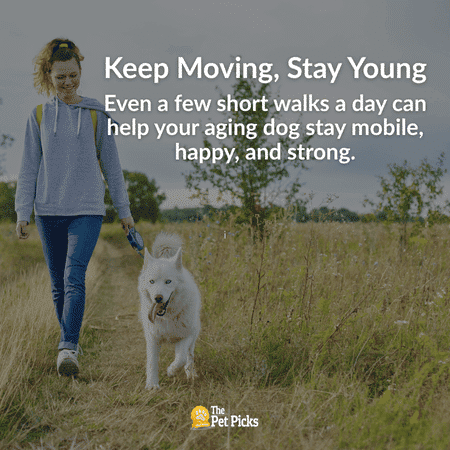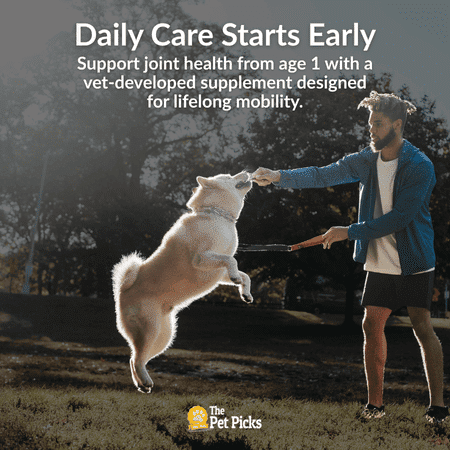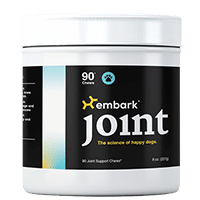When Walks Get Shorter and Naps Get Longer: Why This Guide Matters
One day, you notice it. Your dog isn't rushing to the door like they used to. Walks are shorter. Naps are longer. Maybe your pup struggles a little to get up after resting. It happens gradually, but the signs are clear. Our dogs slow down with age, just like we do.
At ThePetPicks.com, we’re pet parents first. And when our dogs start to show signs of aging, we feel it in our hearts. This guide is here to help you understand why it’s happening, what you can do about it, and how to keep your dog active and comfortable in their golden years.
What Happens as Dogs Age (and Why Slowing Down Is More Than Just “Getting Older”)
Aging affects every dog differently, but there are some common patterns. Understanding what’s going on in your dog’s body is the first step to helping them feel their best.
Joint Wear and Tear
Cartilage naturally breaks down over time. In senior dogs, this means reduced cushioning between joints, leading to stiffness, reduced range of motion, and discomfort when moving.
Muscle Loss (Sarcopenia)
Just like in humans, aging dogs can lose muscle mass. Less muscle means less strength to support joints, climb stairs, or go for long walks.
Arthritis and Inflammation
Many older dogs develop osteoarthritis. This condition causes chronic inflammation, making movement painful and slow.
Neurological and Cognitive Changes
In some dogs, changes in the brain can affect coordination or motivation. Slower reactions and reduced focus may cause them to move less confidently.
Pain Avoidance Behavior
If something hurts, dogs learn to avoid it. That means less running, jumping, and playing, which can further weaken muscles and increase stiffness.
These changes don’t mean your dog is out of options. With small daily adjustments and proactive care, you can help them stay mobile, engaged, and happy.

Small Habits, Big Impact: Daily Ways to Keep Your Dog Active and Comfortable
Keep Moving, Gently
Routine, low-impact movement is one of the best things you can offer an aging dog. Try short walks several times a day, gentle play sessions, or even indoor fetch. The goal isn’t speed. It’s consistency.
Introduce Joint-Friendly Routines
Avoid sudden changes in pace or activities that involve jumping from heights. Ramps, non-slip rugs, and raised bowls reduce strain on aging joints.
Make Time for Mental Exercise
Mental engagement can also keep a dog physically active. Puzzle toys, snuffle mats, and training games encourage movement in a fun and rewarding way.
Use Massage and Warmth
Light massages around the hips, shoulders, and back can stimulate circulation. Orthopedic beds or heated pads can soothe sore joints during rest.
Focus on Nutrition
A balanced diet rich in protein, healthy fats, and antioxidants supports overall mobility. Avoid excess weight, which adds strain on joints.
The Power of Prevention: Why Supplements Matter Before It’s Too Late
Sometimes we wait until signs are obvious, limping, slowing down, or hesitating on stairs. But supplements work best when introduced before major decline. Think of it as daily care, not damage control.
Why Joint Health Supplements Work
The best joint supplements help protect cartilage, reduce inflammation, and support flexibility. Ingredients like glucosamine, chondroitin and MSM, have been shown to offer real benefits when used consistently.
Embark Joint Supplement: Backed by Science, Loved by Dogs
If you're looking for a trusted solution to support your dog’s joint health, Embark’s Joint Supplement checks all the boxes:
- Vet-developed and science-backed: Designed by experts using all-natural active ingredients
- Formulated for flexibility and comfort: Combines Glucosamine, MSM, Chondroitin and white willow bark powder
- Daily soft chews: Easy to give and tasty enough for even picky pups
- Supports joint function and healthy mobility: Ideal for senior dogs or proactive care
Consider adding Embark’s Joint Supplement to your dog’s daily care as part of an overall mobility strategy. It’s a small step with big potential.
Check with your veterinarian before adding any new supplement to your dog’s diet.
Watch Out for These Signs: When to Talk to Your Vet
Some signs of slowing down are natural. Others may point to more serious issues that need professional care.
- Difficulty getting up or lying down
- Limping or favoring a leg
- Reluctance to go for walks or climb stairs
- Visible swelling or stiffness
- Changes in posture or gait
- Behavioral shifts (aggression, withdrawal)
If your dog is showing any of these consistently, make a vet appointment. Supplements, therapies, or medications may be needed to improve quality of life.

Bonus Tips for Supporting Your Senior Pup
Make Your Home Joint-Friendly
Add rugs to slick floors. Use doggy stairs for the couch or bed. Consider elevated food bowls. Small environmental tweaks go a long way.
Stick to a Routine
A predictable routine gives older dogs comfort. Feed, walk, and rest on a consistent schedule.
Adjust Expectations
Your 12-year-old Lab won’t fetch like a 2-year-old pup, and that’s okay. Celebrate what they can do instead of mourning what they used to do.

Your Dog’s Golden Years Can Still Be Active Years
Age brings changes, but it doesn’t have to bring a full stop to your dog’s activity. With understanding, care, and daily action, you can help your dog stay mobile and enjoy life well into their senior years.
Checklist for Keeping Aging Dogs Active:
- Gentle, consistent exercise
- Joint-safe environments (ramps, rugs, beds)
- Nutrient-rich diet and weight control
- Mental stimulation through games and toys
- Daily joint support like Embark’s Joint Supplement
- Regular vet check-ins and early interventions
FAQs
Why is my dog suddenly slowing down?
Gradual slowdown is common with age, but sudden changes may indicate pain, arthritis, or other issues. If it's abrupt, check in with your vet.
How can I help my older dog walk better?
Short, frequent walks on soft surfaces help. Use a harness for support, avoid stairs when possible, and consider a joint supplement for added comfort.
When should I start my dog on a joint supplement?
You can begin supporting your dog’s joint health with a daily supplement as early as 1 year of age. Perfect for aging pups, high-energy breeds, or any dog that’s genetically prone to joint concerns. Check with your veterinarian before adding any new supplement to your dog’s diet.
Is it okay to still play fetch or go on hikes with my senior dog?
Absolutely, just adjust the intensity and watch for signs of fatigue. Always let your dog set the pace.
How do I determine the correct dosage for my dog?
Instructions for use are included on the product packaging based on weight.
Is this product suitable for senior dogs?
Yes, these ingredients help support aging joints.
Can I use this supplement alongside other medications?
Always consult your veterinarian before combining supplements with medications.
A Loving Reminder
The information provided at ThePetPicks.com is based on research and expertise, aiming to enhance the bond between you and your dog. However, it’s essential to remember that every dog is unique. Always consult with professionals, like veterinarians or trainers, for specific concerns or advice. At ThePetPicks.com, we believe in “Trust Born from Love,” and we encourage every pet parent to make informed decisions rooted in love and care.



